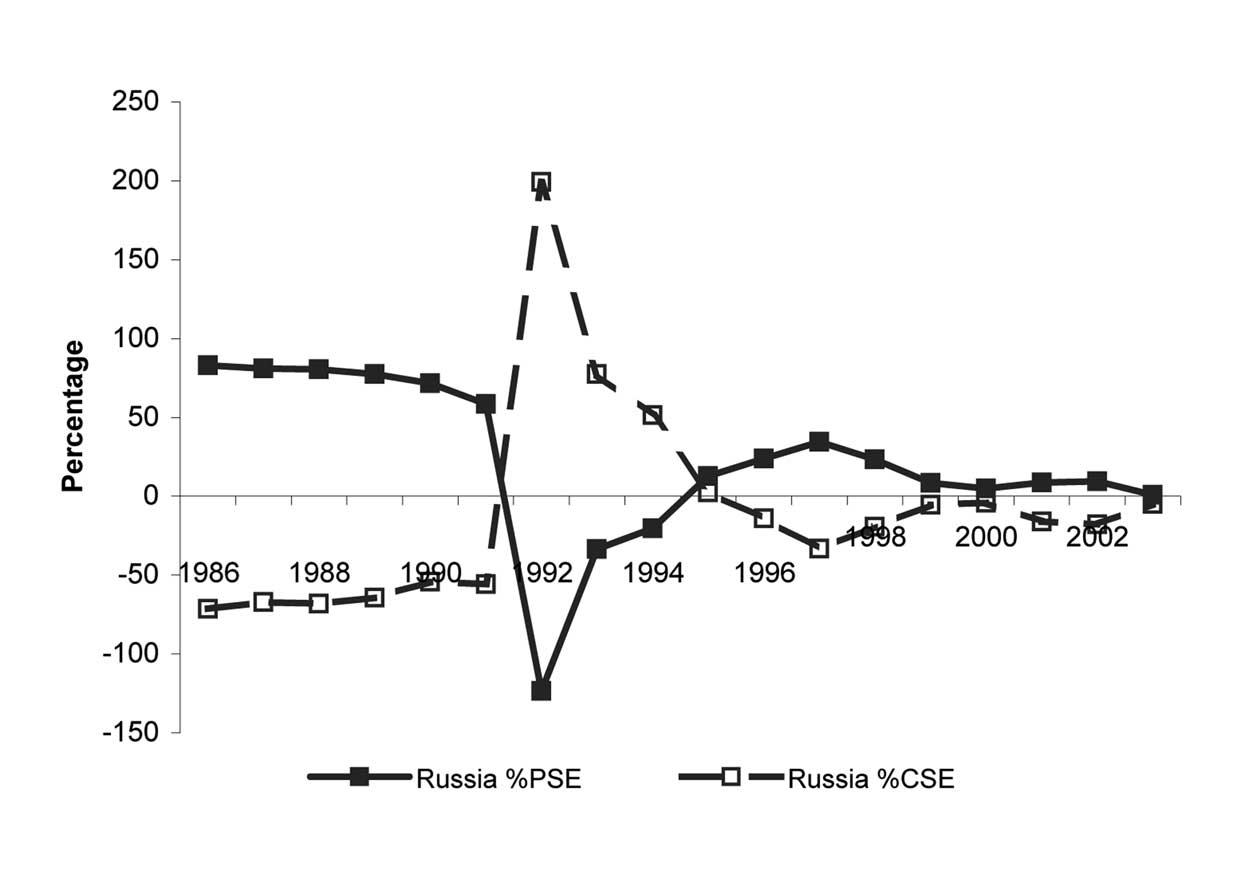
| Previous | Return to table of contents | Search Reports | Next |
| « Back to weltagrarbericht.de | ||
Environmental, Economic, and Social Impacts of NAE Agriculture and AKST | 99

Figure 3-11. Producer and Consumer Support Estimates (PSE & CSE) for farming in Russia. Source: OECD, 2004
the heart of the debate were failures to agree terms for access for developing country exports to developed country markets and to reach a settlement on domestic support (WTO, 2006). According to a review of more than 200 theoretical and empirical studies about the effect of trade liberalization on sustainability, the effects on economic welfare and overall sustainability depend on the nature and extent of the flanking and other supporting measures that are taken (Kirkpat-rick et al., 2004). The potential, aggregate economic welfare gains to be made from free trade and increased foreign investment inflows, are not necessarily shared by all countries or by all socioeconomic groups within these countries. In many examples the social (and environmental) impacts are negative if protective measures are insufficiently effective. 3.2.8 External economic impacts of the application of AKST |
|
fered as a result of farming practices, can be calculated with relative ease. Less easily assessed are environmental losses occurring where plant nutrients or pesticides contaminate water courses (see 3.1). The use of AKST in devising and using veterinary medicines, pesticides, herbicides and in the management of more intensive stocking of livestock can raise public health issues. Food-borne diseases represent costs to affected individuals and to medical services. For the industry, market collapses as a result of food scares can destroy the value of goods already produced. Governments seek to minimize risks to human health but the costs can be very large. For example the gross total cost to the UK and the EU budgets of measures to combat BSE between 1996 and 2006 are reported below (Table 3-6) (Defra, 2006a). Similarly, UK government costs to manage bovine tuberculosis between 1997 and 2007 are presented in Table 3-7. 3.3 Social Impacts of Agriculture and AKST within NAE |
| Previous | Return to table of contents | Search Reports | Next |
| « Back to weltagrarbericht.de | ||